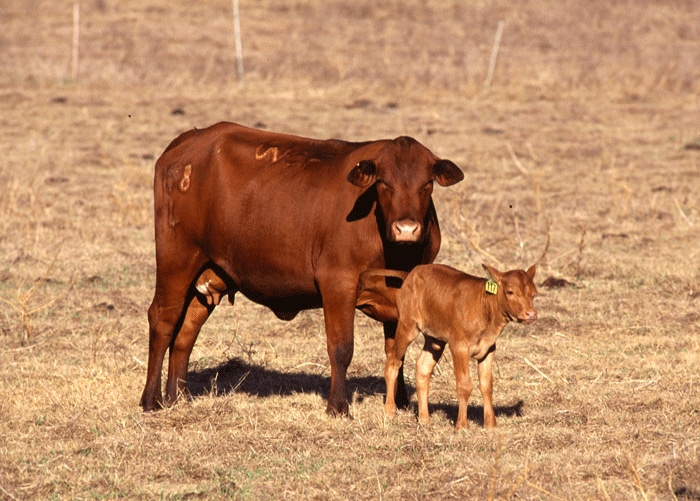August 2, 2011

Expanding extreme drought conditions in Oklahoma and other southern Great Plains states seems to be causing a significant acceleration of cattle liquidation in the region.
In Oklahoma, the combined total for federally reported auctions the past two weeks has shown a 56 percent increase in feeder cattle sales and a 205 percent increase in cow and bull sales compared to the same period one year ago.
The auction totals include significant numbers of double-stocked summer stocker cattle from the Osage country that are typically marketed this time of year. However, the totals also include large numbers of cows and lightweight feeder cattle that are not typically marketed.
“Most likely we are seeing a second wave of cow liquidation made up of animals with spring-born calves that are just now big enough to wean early and sell,” said Derrell Peel, Oklahoma State University Cooperative Extension livestock marketing specialist.
Peel added that he is receiving anecdotal evidence from auctions large and small about excessive numbers of feeder cattle and cows being marketed. In addition, livestock haulers are booked and it is difficult to arrange shipping at this time.
Prices for slaughter cows, bred cows and cow-calf pairs have dropped sharply in the past two weeks.
“This is likely a temporary situation due, in part, to the bottlenecks of selling and shipping so many animals in a short period of time,” Peel said.
No other alternative
Many producers are selling because they have no other alternative given current input costs and drought-stressed resources. Those with the ability to postpone sales for a couple of weeks may find the logistics improved, not to mention a better price.
“It’s hard to say how long the current bulge in cow liquidation will last,” Peel said.
“Most likely it will be a matter of no more than another two to four weeks. Unfortunately, many of the cows are going to slaughter, contributing to additional reductions in America’s already diminished cow herd compared to previous decades.”
Beef cow slaughter in Federal slaughter Region 6 — Oklahoma, Texas, New Mexico, Arkansas and Louisiana — is 16 percent higher for the year-to-date compared to last year.
In the most recent two weeks of data, beef cow slaughter in Region 6 has increased 35 percent compared to the same period last year.
“Drought conditions are having devastating effects on producers in the afflicted region, which in turn are affecting the beef cattle industry nationwide, and will continue to do so for several years,” Peel said.
“Total U.S. beef cow slaughter for the year-to-date is down 2.7 percent but the gap is closing because of large slaughter totals in the drought-afflicted south-central states.”
For most weeks of 2011, the national total beef cow slaughter decreased compared to last year. However, in the last four weeks of slaughter data, the week-to-week totals for beef cow slaughter have exceeded year-ago levels.
“By pushing beef cow slaughter close to last year’s record levels, the drought ensures additional herd liquidation that is deepening the hole from which the industry must start to rebuild,” Peel said.
“That has been a frequently asked and somewhat worrisome question: When is the U.S. beef industry going to rebuild its diminished cow herd?”
The July Cattle Report confirmed that the July 1 beef cow herd was down 1 percent from last year. However, this survey value likely does not reflect the accelerated liquidation that has occurred during the month of July.
You May Also Like




